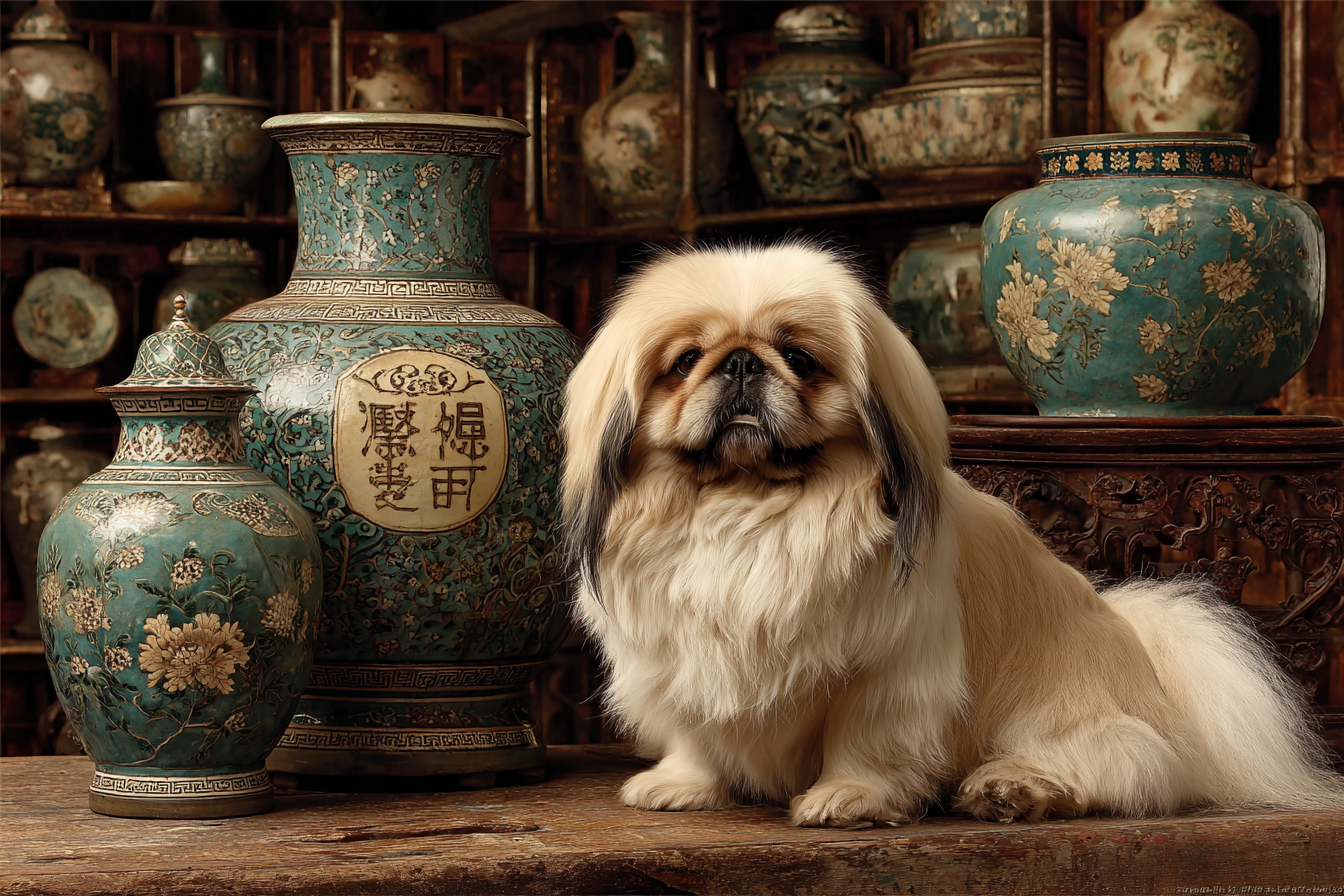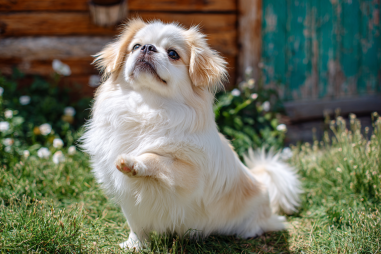The Pekingese is a small dog breed with a grand and storied background that stretches back centuries. Known for its lion-like appearance and dignified bearing, this breed has a royal pedigree intertwined with Chinese history, culture, and mythology. Far more than just a charming pet, the Pekingese was once a symbol of imperial power and spiritual protection, treasured by emperors and forbidden to be owned by commoners. Join us as we explore the fascinating origins, cultural importance, and transformation of the Pekingese breed from ancient China to the modern world.
Origins and Ancestry of the Pekingese
The Pekingese breed traces its roots back over 2,000 years to ancient China, where it emerged as a distinct small companion dog. It is believed that these dogs descended from native Tibetan Spaniel-like dogs and possibly other small Asian breeds. The Pekingese’s ancestors were likely bred for their unique appearance, particularly their flattened faces, flowing coats, and lion-like manes, which were highly regarded in Chinese culture.
Archaeological evidence, including statues and paintings found in the imperial tombs, shows dogs resembling the modern Pekingese as early as the Tang Dynasty (618–907 AD). These regal little dogs were carefully bred and refined over the centuries within palace walls, maintaining consistency in their appearance and temperament.
Role in Chinese Imperial Courts
None other than the emperors of China were privileged to own Pekingese dogs. The breed was considered sacred and a symbol of imperial dignity and power. These dogs lived luxurious lives within the Forbidden City and other palaces, often pampered and guarded by palace attendants.
The Pekingese was held in such high esteem that common people were forbidden to own them, and stealing one was punishable by death. Legend even states that these dogs were descended from lions, according to Buddhist mythology, making them divine protectors and companions to the royal family. Their lion-like appearance was seen as a reflection of strength and courage.
Inside the court, Pekingese dogs were more than mere pets; they played a role in rituals and were believed to bring good fortune, ward off evil spirits, and symbolize the everlasting strength of the dynasty.
Symbolism and Cultural Impact
The Pekingese represents much more than a lapdog in Chinese culture. Its lion-like appearance links it directly to the mythical guardian lions, or “Foo Dogs,” statues that commonly protect temples and palaces. This association imbued the breed with symbolism of protection, nobility, and spiritual significance.
In Chinese art and literature, the Pekingese is frequently portrayed as a divine creature, a constant companion to the elite, and a bearer of good luck. The breed’s depiction as a lion also tied it to the power and grandeur of Buddhism and Chinese mythology, further enhancing its place in cultural heritage.
Introduction to the West
The Pekingese remained a closely guarded treasure of the imperial household until the mid-19th century, when Western influence grew in China. The Opium Wars and the subsequent looting of the Summer Palace during the Second Opium War in 1860 brought the breed to the attention of the Western world.
British troops discovered and took several Pekingese dogs from the palace, introducing the breed to Europe. From there, the Pekingese quickly gained popularity among European aristocracy and dog enthusiasts. The breed was admired for its exotic charm and unique appearance, sparking admiration and demand in Britain and beyond.
Development into Modern Breed Standards
Once introduced to the West, the Pekingese underwent a period of development as breeders sought to standardize its features while maintaining its distinctive look. The breed was officially recognized by kennel clubs such as The Kennel Club (UK) and the American Kennel Club (AKC) in the late 19th and early 20th centuries.
Today’s Pekingese retains much of the original lion-like appearance with its flat face, large eyes, and profuse double coat. The breed standard emphasizes a bold and proud demeanor, a relatively compact size, and a flowing mane of fur that enhances the lion impression. Careful breeding has preserved the temperament traits prized by ancient Chinese breeders—loyalty, bravery, and an independent spirit.
Preservation Efforts
Given the Pekingese’s royal origins and small gene pool, breeders and enthusiasts place a strong emphasis on preserving the breed’s health and heritage. Efforts include:
- Maintaining breed standards to ensure the dogs’ characteristic look and temperament
- Breeding programs focused on genetic diversity to minimize hereditary health issues
- Educational outreach about the breed’s history and responsible ownership
- Participation in dog shows and cultural events to keep interest alive worldwide
These preservation efforts help ensure this noble breed continues to thrive in modern times, honoring its distinguished past while adapting to contemporary life as beloved companions.
Embracing a Legacy of Royalty and Charm
The Pekingese is truly a living piece of history, embodying the majestic grandeur of ancient Chinese royal courts and the cultural richness of one of the world’s oldest civilizations. From its guarded beginnings as a sacred imperial companion to its role as a beloved pet around the globe, the Pekingese continues to captivate dog lovers with its unique blend of elegance, courage, and charm.
Understanding the breed’s royal lineage and cultural significance allows owners and admirers to appreciate the Pekingese not just as a pet, but as a symbol of tradition, artistry, and timeless nobility.







